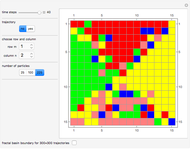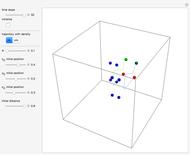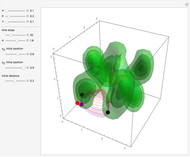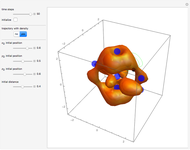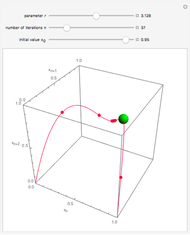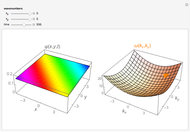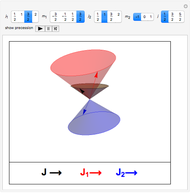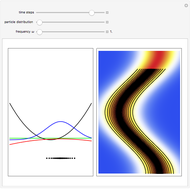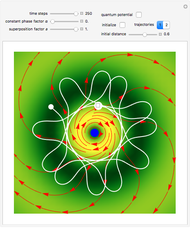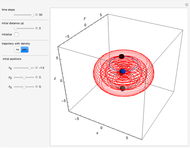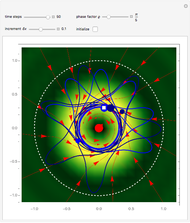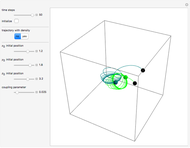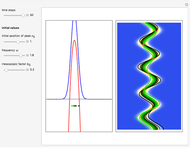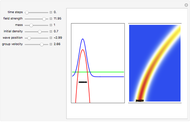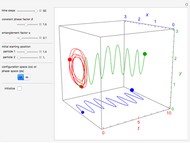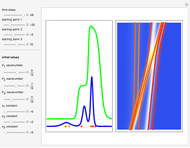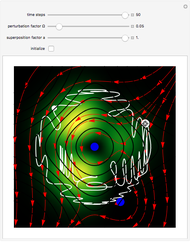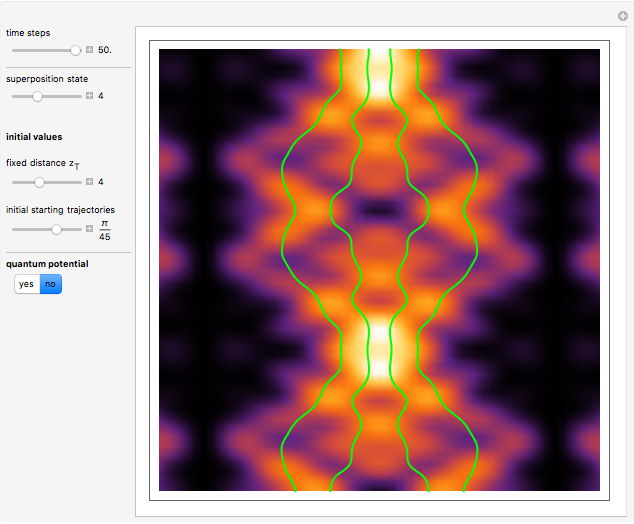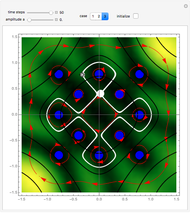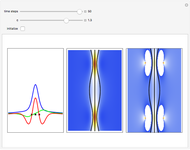Chaotic Quantum Motion of Two Particles in a 3D Harmonic Oscillator Potential

Requires a Wolfram Notebook System
Interact on desktop, mobile and cloud with the free Wolfram Player or other Wolfram Language products.
A system with three degrees of freedom, consisting of a superposition of three coherent stationary eigenfunctions with commensurate energy eigenvalues and a constant relative phase, can exhibit chaotic motion in the de Broglie–Bohm formulation of quantum mechanics (see Quantum Motion of Two Particles in a 3D Trigonometric Pöschl–Teller Potential). We consider here an analog using a three-dimensional harmonic-oscillator potential. In this case, the velocities of the particles are autonomous, with a complex, chaotic trajectory structure. Two particles are placed randomly, separated by an initial distance  , on the boundary of the harmonic potential.
, on the boundary of the harmonic potential.
Contributed by: Klaus von Bloh (July 2015)
Open content licensed under CC BY-NC-SA
Snapshots
Details
Associated Hermite polynomials arise as the solution of the Schrödinger equation:
 ,
with
,
with  ,
,  , and so on. A degenerate, unnormalized, complex-valued wavefunction
, and so on. A degenerate, unnormalized, complex-valued wavefunction  for the three-dimensional case can be given by:
for the three-dimensional case can be given by:
 ,
,
where  ,
,  ,
,  are eigenfunctions, and
are eigenfunctions, and  are permuted eigenenergies of the corresponding stationary one-dimensional Schrödinger equation with
are permuted eigenenergies of the corresponding stationary one-dimensional Schrödinger equation with  . The eigenfunctions are defined by
. The eigenfunctions are defined by
 ,
,
where  ,
,  ,
,  are Hermite polynomials. The parameter
are Hermite polynomials. The parameter  is a constant phase shift. The eigenvalues' numbers
is a constant phase shift. The eigenvalues' numbers  depend on the three quantum numbers
depend on the three quantum numbers  .
.
In this Demonstration, the wavefunction  is defined by:
is defined by:
 .
.
In this case, the square of the Schrödinger wavefunction  , where
, where  is its complex conjugate, is not time dependent:
is its complex conjugate, is not time dependent:
 .
.
The velocity field  is calculated from the gradient of the phase from the total wavefunction in the eikonal form (often called polar form)
is calculated from the gradient of the phase from the total wavefunction in the eikonal form (often called polar form)  . The time-dependent phase function
. The time-dependent phase function  from the total wavefunction
from the total wavefunction  is:
is:
 .
.
The corresponding velocity field becomes time independent (autonomous) because of the time-independent gradient of the phase function.
In the program, if PlotPoints, AccuracyGoal, PrecisionGoal, MaxSteps, and MaxIterations are enabled, increasing them will give more accurate results.
References
[1] "Bohmian-Mechanics.net." (Jul 30, 2015) www.bohmian-mechanics.net/index.html.
[2] S. Goldstein. "Bohmian Mechanics." The Stanford Encyclopedia of Philosophy. (Jul 30, 2015)plato.stanford.edu/entries/qm-bohm.
Permanent Citation







